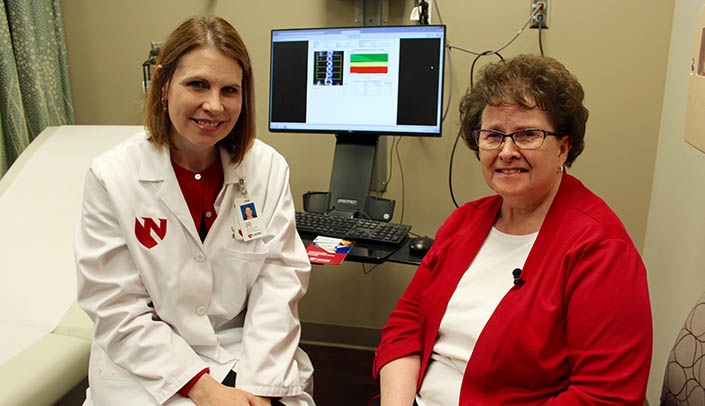The statistics are staggering. Osteoporosis is responsible for two million broken bones every year in the U.S. and causes 75,000 deaths, according to the National Osteoporosis Foundation. Most people don’t know they have it until they break a bone.
“About half of future bone breaks can be prevented by intervening with treatment,” said Laura Graeff-Armas, M.D., UNMC associate professor of internal medicine and a Nebraska Medicine endocrinologist who specializes in osteoporosis and conditions that cause bone loss. “Breaking bones is a warning sign that you have osteoporosis or pre-osteoporosis. I’m seeing some patients at their second or third fracture — fractures that needlessly occurred because osteoporosis wasn’t diagnosed or treated.”
In an effort to boost the number of patients diagnosed and treated for osteoporosis, Dr. Graeff-Armas led an effort to create an osteoporosis clinic for patients with bone health problems inside the Orthpaedics Clinic at the Lauritzen Outpatient Center.
“Our orthopaedic specialists are on the front line of these types of injuries,” she said. “By collaborating, we can increase our patients’ awareness of their risk and hopefully prevent another fracture.”
Medical center orthopaedic providers are referring patients 50 years old or older, who have suffered a fracture, to Dr. Armas for an osteoporosis evaluation. The goal is to proactively identify those patients at risk for osteoporosis in an effort to prevent secondary fractures. The patients are screened for osteoporosis, and if diagnosed with the disease, they are then treated and can hopefully avoid future fractures or broken bones.
Dr. Graeff-Armas says the average age of person suffering a second fracture is 74.
“The elderly are at the highest risk for a fracture because their bone is more fragile,” she said. “Hip fractures could mean the end of life for some of these patients. Many of them go to a skilled nursing facility and never return home. We want to prevent these types of injuries.”
Elderly patients often have other health problems that take priority over treating osteoporosis, Dr. Graeff-Armas said. That’s why she sees the partnership with orthopaedics as a critical step in treatment and prevention of future injuries.
“There is a lot to discuss with a patient regarding treatment of osteoporosis,” she said. “It’s not easily incorporated into a primary care or orthopaedic visit.”
For sake of convenience, the osteoporosis clinic tries to schedule patients at the same time as their orthopaedic visit. Once recommendations for treatment are determined, the patient’s primary care physician can manage the health care plan.
At the end of May, Dr. Graeff-Armas will begin seeing patients in the general endocrine clinic in the Medical Office Building at Bellevue, which is focused on osteoporosis and metabolic bone disease, as well as general endocrine.
Call 800.922.0000 today to make an appointment for an osteoporosis screening, or visit NebraskaMed.com/Womens-health/osteoporosis to learn more about osteoporosis treatment at Nebraska Medicine.
